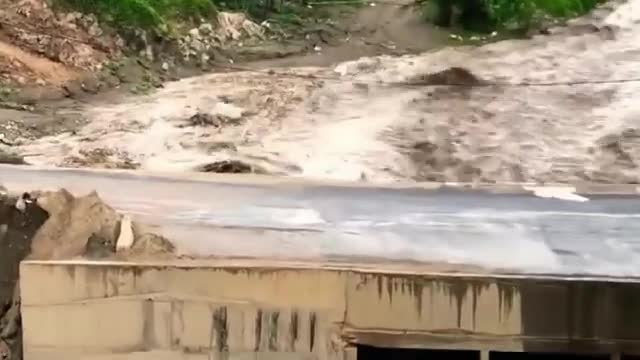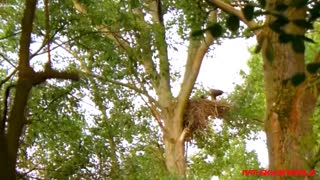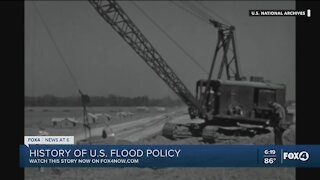Premium Only Content

★Amazing flash flood in History caught on camera-angry mother nature part-1
A flash flood is a rapid flooding of low-lying areas: washes, rivers, dry lakes, and depressions. It may be caused by heavy rain associated with a severe thunderstorm, hurricane, tropical storm, or meltwater from ice or snow flowing over ice sheets or snowfields. Flash floods may also occur after the collapse of a natural ice or debris dam, or a human structure such as a man-made dam, as occurred before the Johnstown Flood of 1889. Flash floods are distinguished from regular floods by having a timescale of fewer than six hours between rainfall and the onset of flooding. The water that is temporarily available is sometimes used by certain plants for growth. However, plants that thrive in drier areas can be harmed by flooding, as the plants can become stressed by a large amount of water.
Flash floods can occur under several types of conditions. Flash flooding occurs when it rains rapidly on saturated soil or dry soil that has poor absorption ability. The runoff collects in gullies and streams and, as they join to form larger volumes, often forms a fast flowing front of water and debris.
Flash floods most often occur in dry areas that have recently received precipitation, but they may be seen anywhere downstream from the source of the precipitation, even many miles from the source. In areas on or near volcanoes, flash floods have also occurred after eruptions, when glaciers have been melted by the intense heat. Flash floods are known to occur in the highest mountain ranges of the United States and are also common in the arid plains of the Southwestern United States. Flash flooding can also be caused by extensive rainfall released by hurricanes and other tropical storms, as well as the sudden thawing effect of ice dams. Human activities can also cause flash floods to occur. When dams fail, a large quantity of water can be released and destroy everything in its path.
-
 2:33
2:33
MahmoudAlhayek
3 years agoNature Of Mother
281 -
 7:43
7:43
AFV
3 years agoMother Nature
2.51K3 -
 0:56
0:56
WFTX
3 years agoHistory of U.S. Flood Policy
49 -
 0:43
0:43
erichornermusic
3 years agoFlash flood
1312 -
 0:52
0:52
Quidestveritas09
3 years agoFireside chat with Mother Nature
77 -
 8:03
8:03
Colion Noir
5 hours agoFacebook Just Banned Smith & Wesson, Why Gun Owners Should Care?
32.2K35 -
 8:10
8:10
Space Ice
7 hours agoSurf Ninjas Is Rob Schneider At His Rob Schneiderest - Rob Schneider Movie Ever
17.1K19 -
 40:15
40:15
Stephen Gardner
5 hours ago🔥Trump NOW in GREATER DANGER | Tucker Carlson exposes DESPICABLE SCHEME!!
53.9K64 -
 1:04:08
1:04:08
PMG
1 day ago $3.65 earned"Trump's Win Seems Too Easy... is This the Calm Before the STORM? w/ Mike Adams"
14K9 -
 8:32
8:32
Game On!
6 hours ago $4.77 earnedChicago Bears FIRE Matt Eberflus after embarrassing loss!
28K23